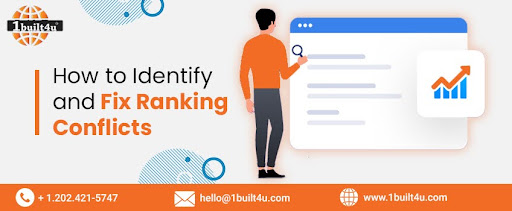
Ways to Stop Spam SEO Traffic in Google Analytics
In today's digital age, online businesses and website owners rely heavily on data analytics to make informed decisions. Google Analytics is a powerful tool that provides valuable insights into website traffic, user behavior, and more. However, just like any other system, it's vulnerable to spam traffic that can distort your data and misguide your strategies. Spam SEO traffic can be a significant nuisance, and it's essential to address it effectively. Therefore, our digital marketing company Ashburn USA has listed various ways to stop spam SEO traffic in Google Analytics and ensure your data remains accurate and actionable.
Understanding Spam SEO Traffic
Before our digital marketing agency Ashburn USA delves into the methods of preventing spam SEO traffic in Google Analytics, let's understand what it is. Spam SEO traffic, also known as referrer spam or ghost traffic, is a type of fake traffic generated by bots or malicious actors. This traffic doesn't represent actual human visitors but is designed to manipulate website analytics data. There are two primary types of spam SEO traffic:
- Crawler Spam: This type of spam traffic originates from web crawlers and scrapers, which are automated scripts that browse websites. They often target your website with the intention of promoting their services, products, or websites. They can create fake referral URLs to trick Google Analytics into counting them as legitimate traffic sources.
- Ghost Spam: Ghost spam is more sinister and challenging to identify. It involves sending fake hits directly to your Google Analytics account without ever visiting your website. This type of spam can artificially inflate your traffic statistics, making it harder to distinguish between real and fake visitors.
Spam SEO traffic can skew your data, making it difficult to make informed decisions and assess the success of your SEO efforts accurately. Let's explore some ways to combat this nuisance.
Ways to Stop Spam SEO Traffic
1) Apply Filters in Google Analytics: Google Analytics provides a useful feature that allows you to filter out spam traffic by creating custom filters. To apply these filters, follow these steps:
- Log in to your Google Analytics account.
- Navigate to the Admin section.
- In the View column, click on "Filters."
- Click on the "+ New Filter" button.
- Create a filter with the following settings
-
Filter Name: Give your filter a descriptive name.
-
Filter Type: Select "Custom."
-
Filter Field: Choose "Campaign Source.
-
Filter Pattern: Enter the domain names of legitimate traffic sources.
- Save the filter.
Keep in mind that while filters are effective, they may not catch all spam traffic, especially if new spam sources emerge. Therefore, it's essential to combine filters with other techniques.
2) Implement a Valid Hostname Filter: One common characteristic of spam SEO traffic is that it often comes from unfamiliar or fake hostnames. You can use the valid hostname filter to only include traffic from genuine hostnames. Here's how:
- Navigate to the Admin section of your Google Analytics account.
- In the View column, click on "Filters."
- Click on the "+ New Filter" button.
- Create a filter with the following settings:
-
Filter Name: Provide a meaningful name for the filter.
-
Filter Type: Choose "Custom."
-
Filter Field: Select "Hostname."
-
Filter Pattern: Enter your legitimate hostname(s).
- Save the filter.
This filter ensures that only traffic from the specified hostname(s) will be included in your analytics reports, effectively eliminating spam from fake hostnames.
3) Regularly Update Your Filter List: As new spam sources emerge, it's essential to stay vigilant and update your filter list regularly. Google Analytics provides a community-driven solution where users share updated lists of known spam sources. You can use these lists to keep your filters current and effective.
4) Utilize .htaccess or Firewall Rules: For more advanced users, implementing server-level rules can help block spam traffic even before it reaches your website or Google Analytics. By using the .htaccess file on your web server or employing a firewall, you can block IP addresses or referrer domains associated with known spam sources. This method is highly effective, but it requires some technical expertise.
5) Use an Analytics Spam Blocker: Several third-party tools and services can help you automatically block spam SEO traffic in Google Analytics. These tools continuously update their databases to identify and filter out known spam sources. Some popular options include "Referrer Spam Blocker" and "Analytics Spam Blocker."
6) Verify Traffic Sources: To manually detect and eliminate spam traffic, you can verify the legitimacy of your traffic sources. When you come across a suspicious source in your analytics reports, visit the URL to check if it's a legitimate website. If it's a spam source, you can then proceed to block it using filters.
7) Set Up Google Analytics Alerts: Google Analytics allows you to create custom alerts that notify you when certain conditions are met. You can set up alerts for significant changes in your data, such as a sudden influx of traffic from an unknown source. This can help you identify and address spam traffic promptly.
8) Regularly Monitor Your Analytics Data: Monitoring your Google Analytics data on a regular basis is crucial. By keeping a close eye on your reports, you can quickly spot any anomalies or unusual patterns that might indicate the presence of spam traffic. Once identified, take immediate action to block the spam source.
The Need to Stop Spam SEO Traffic in Google Analytics
In the digital age, data analytics plays a pivotal role in shaping digital marketing services Ashburn USA and around the globe, and Google Analytics is the go-to tool for gaining valuable insights into website traffic and user behavior. However, the presence of spam SEO traffic poses a significant threat to the integrity and accuracy of the data collected. Therefore, the need to stop spam SEO traffic in Google Analytics is paramount for several compelling reasons.
- Data Accuracy: Accurate data is the foundation of informed decision-making. Spam SEO traffic can distort the metrics and make it challenging to determine the real impact of your marketing efforts. Without reliable data, businesses risk making misguided decisions and allocating resources ineffectively.
- Resource Allocation: Effective resource allocation is crucial for optimizing marketing campaigns. By eliminating spam traffic, businesses can focus their efforts and budgets on strategies that are genuinely driving traffic and conversions. This, in turn, enhances the ROI of their marketing initiatives.
- Content and SEO Strategy: Accurate data is essential for refining content and SEO strategies. Spam SEO traffic can skew the data regarding the popularity of certain pages or keywords, leading to incorrect assumptions about what is working and what isn't. Stopping spam traffic ensures that content and SEO efforts are based on actual user behavior and preferences.
- User Experience: Understanding your website's actual user behavior is key to enhancing the user experience. Spam traffic can mislead you about how users interact with your site, potentially leading to misguided website optimizations. Stopping spam traffic enables you to focus on genuine user feedback and make improvements accordingly.
Conclusion
Spam SEO traffic can be a persistent problem for website owners and online businesses, but there are effective ways to combat it. By implementing filters, creating custom rules, and staying vigilant, you can ensure that your Google Analytics data remains accurate and reliable. In an era where data-driven decision-making is paramount, it's crucial to maintain the integrity of your analytics data and prevent spam from distorting your insights. With the strategies discussed in this blog, you can take control of your data and make more informed decisions to drive your online success. For more information, visit our digital marketing company - 1built4u.com .





